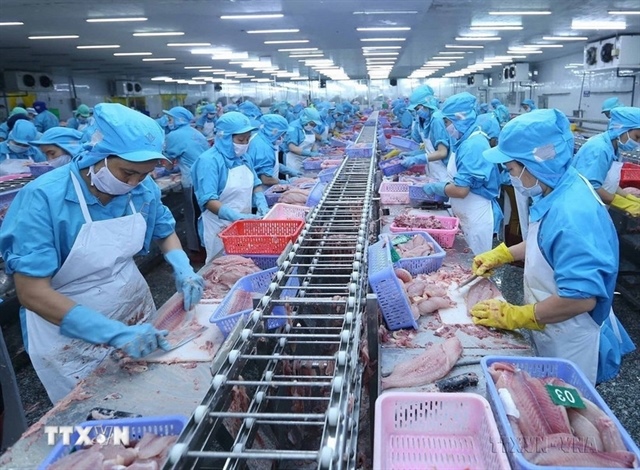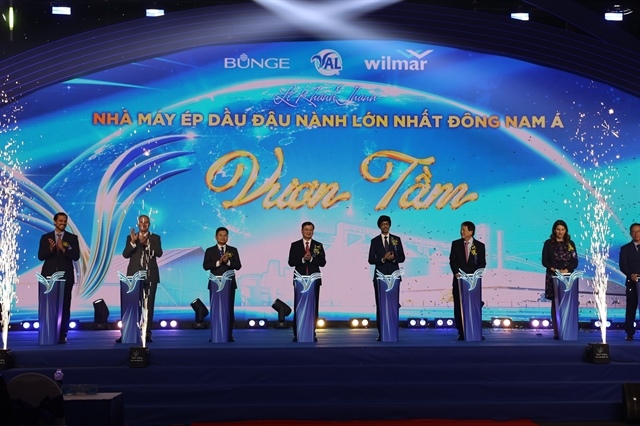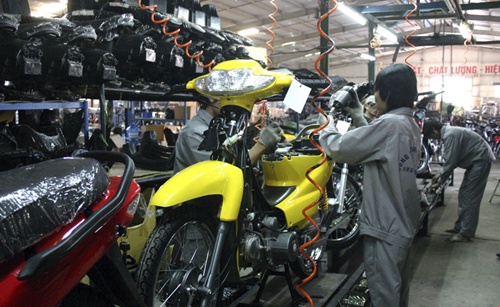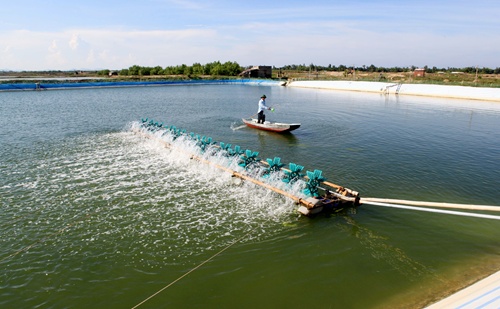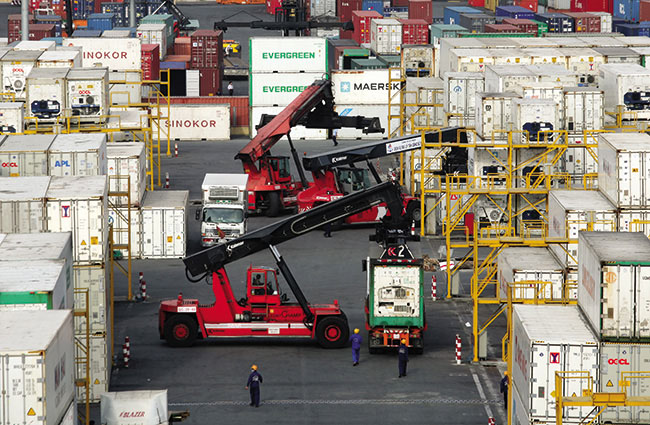Textilers hitch their wagon to US market
Textilers hitch their wagon to US market
If one asks which local sector has distinguished itself in terms of export quality and quantity to the US market over the past two decades, the textile and garment industry is most likely the obvious answer.
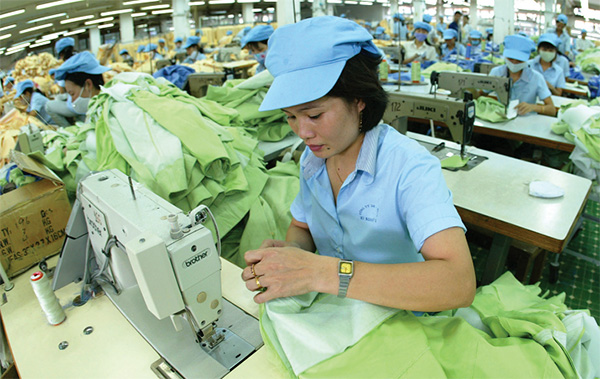
According to statistics from the US Office of Textile and Apparel (OTEXA), Vietnam’s textile and garment industry exported $50 billion worth of products to the US during the period 2010-2015.
An export milestone
The normalisation of relations between Vietnam and the US in 1995 was followed by the signing of the Vietnam-US Bilateral Trade Agreement (BTA) on July 13, 2000, which opened up a brand-new chapter in investment and trade between the two nations.
From that date onward, the textile and apparel industry made remarkable strides forward, impressing US importers with its reasonably-priced, high-quality products.
Le Quoc An, former chairman of Vietnam National Textile and Garment Group (Vinatex), told VIR that the local textile and garment sector moved from being merely a processing market for the relatively tolerant Soviet Union and Eastern European markets, to conquering the US market – a market renowned for its strict regulations.
Among the numerous apparel businesses that had the courage and wherewithal to enter the US market at the time were major names like Garco 10 (May 10), Viet Tien Garment, and Nha Be Corporation.
According to An, the turning point for Vietnam’s textiles and garments reaching the US market in a meaningful, professional manner did not come until the end of 2001 when some 20 local companies came to a trade fair and the launch of a Vinatex office in New York. Thanks to this event, Vinatex finally got the opportunity to meet leaders in the field including from the American Apparel and Footwear Association (AAFA), the US International Trade Admission (US ITA), and from the JC Penney Company. One year later, these industry leaders began to co-operate with Vietnamese textile companies and textile exports to the US began to pick up.
In 2001, prior to the BTA taking effect, Vietnam’s textile and garment exports to the US only amounted to $47 million. In 2002, the tally skyrocketed to $957 million, a 20-fold increase.
Two years later, in 2004, textile and garment exports to the US reached $2.4 billion; in 2006 – $3.2 billion; and in 2013 - a staggering $8.6 billion. As of the end of 2015, the figure hit a whooping $11.5 billion. Vietnam’s textile and garment market has become the US’ second-biggest import market, following China.
Vietnamese textiles and garments currently account for 9 per cent of the US import market share. The value of textile and apparel exports to the US is expected to reach $13 billion in 2016, and continue towards $20 billion by 2020, according to Vinatex former chairman An. However, it should be noted that AmCham predicts that the magic $20 billion number will not be reached until 2025.
Growth of local textile businesses
The BTA has created a foundation for local apparel makers to grow quickly through knowledge gained from doing business with global partners. What was once a small sector that needed a visa for every single export order is now the number one export industry in Vietnam, according to An.
As Vietnamese textile and garment products gradually charmed the US market, many local apparel companies were encouraged to invest in machinery, equipment, and technology, as well as enhance their human resource base to manage and utilise new production systems and technology. Crucially, this changed the perspective and mindset of local businesses, moving them from a collection of small, scattered businesses, to a network of well-managed enterprises with a common goal and the management skill necessary to efficiently handle large orders from the US market.
The role of the US in Vietnam’s textile and garment sector is apparent from even a cursory glance at the numbers. Of Vietnam’s $27 billion in total textile and garment exports in 2015, the US market accounted for $11.5 billion.
For instance, local enterprise Hoa Tho Textile and Garment JSC managed to export $145 million worth of products globally in 2015, an increase of 18 per cent. Significantly, 70 per cent of the export revenue came from the US market alone. The US market is the core market for most local textile exporters, accounting for more orders than elsewhere in the region or around the globe.
Tran Van Pho, chairman of Hoa Tho, noted that after some 20 years of exporting textile and garment products to the US, the company has become a trustworthy partner of many world-famous brands including Snickers, Burton, Novadry, Haggar, Perry Ellis Portfolio, and Calvin Klein.
Of course, it is not by luck that the Vietnamese textile and garment sector has gained a strong foothold on the global textile map, or in the US market, for that matter. According to Pho, in the first few years of targeting the US market, Vietnamese apparel firms were overwhelmed by trade barriers and complicated regulations on quality, specification, technology, and the environment. As such, the industry’s determination and hard work to adapt to higher market standards was the secret to its success.
Meanwhile, according to An, the rapid boost in exports to the US has helped improve the added value of the textile and garment chain in Vietnam, in terms of massive investment injected into upgrading the entire industry. The scale of production has multiplied as a result, and companies are now familiar with international business standards and export markets.
Local textile businesses have also taken the initiative to cut out intermediary phases, and have consequently increased their direct exports to international markets.
Previously, Vietnam textile and garment companies needed to pass at least three intermediary steps to reach the US market. Today, many local firms work directly with their US market partners, or go through only one intermediary step.
“US importers and retailers want to place orders directly with local businesses. They don’t just want a processing order, but a full service package that includes everything from raw materials to final products. Vietnam, as such, was able to retain up to 50 per cent of the $24.5 billion worth of textile exports to the US market, in 2014,” said An.
According to Vinatex general director Le Tien Truong, the Trans-Pacific Partnership (TPP), which is expected to come into force in mid-2018, will slash 60 per cent tariffs to zero, and promote textile and garment exports at an estimated growth rate of over 20 per cent.
A number of large investment projects have been carried out by Vinatex since the end of 2013, with 60 per cent of total investments used in material projects. Vinatex expects to spend some VND10 trillion ($459 million) during the 2015-2016 period to invest in what are considered to be weak production lines.
“We are investing in the supply chain, aiming to perfect it in the near future, so we can supply 60-70 per cent of the raw materials needed in 2018. The 2016-2017 period is the prep time to synchronise our closed production line,” said Truong, adding that the investment in the supply chain will involve a simplified manufacturing process and strict quality control.



